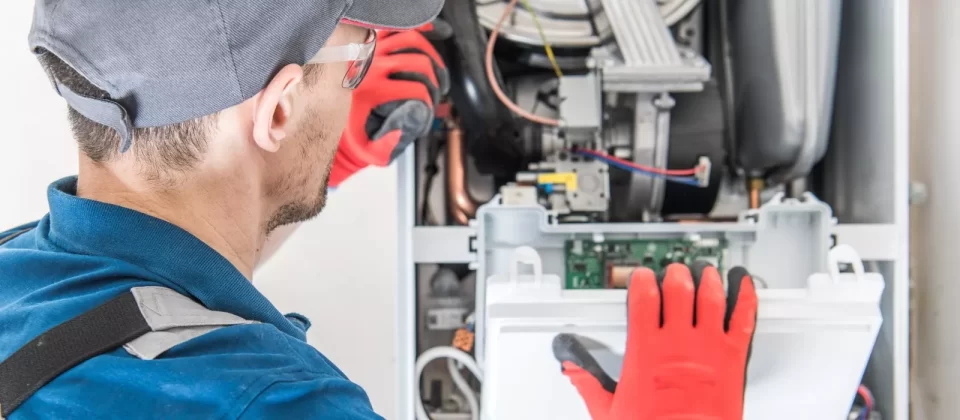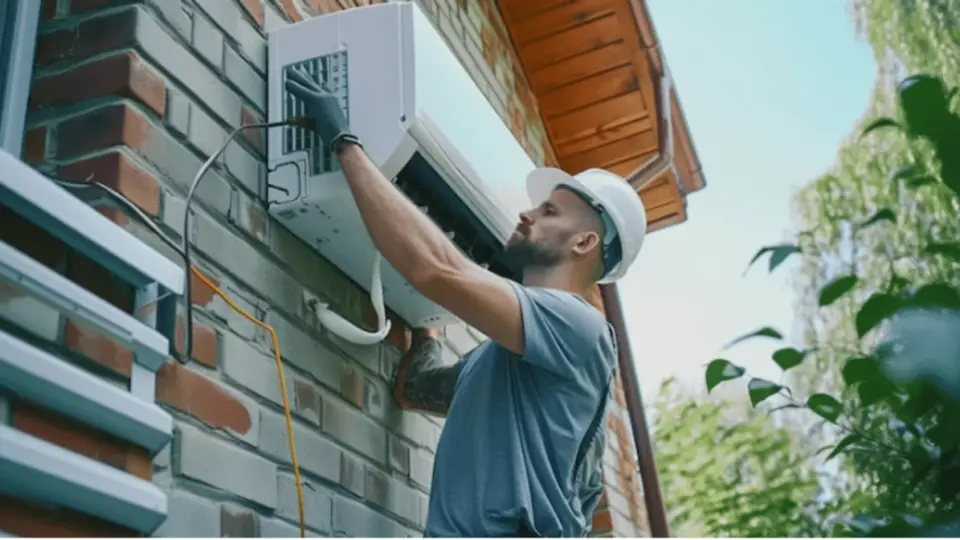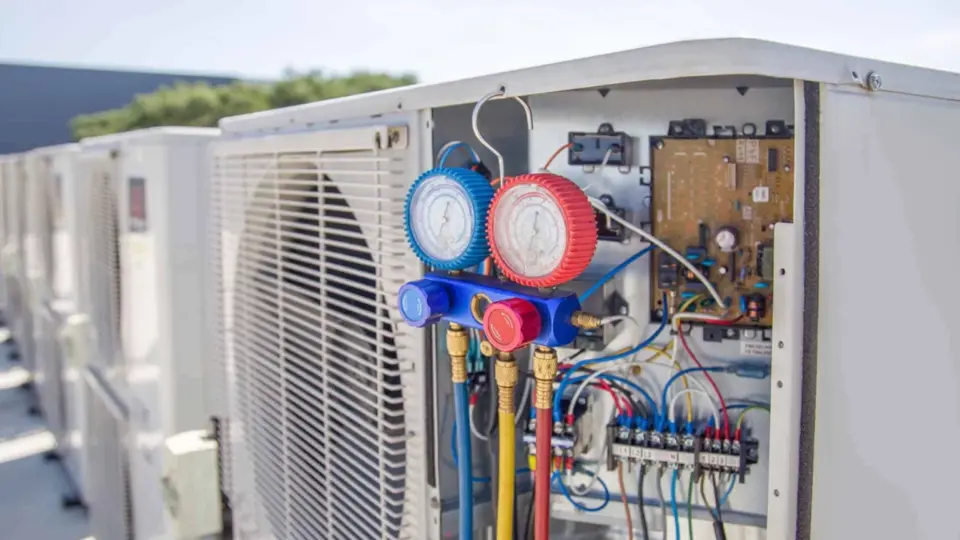When it comes to keeping your equipment or machinery running smoothly, nothing beats regular general maintenance. Think of it as fine-tuning your car for peak performance—essential to ensure everything operates efficiently and safely. Whether it’s your home’s HVAC system, your car, or even office equipment, timely maintenance prevents minor issues from becoming major problems. It’s about staying proactive rather than reactive.
By checking and replacing parts, cleaning systems, and ensuring all components are in top shape, you not only extend the life of your equipment but also save money on costly repairs down the line. So, let’s keep your machinery in perfect condition with regular check-ups and care—it’s the smart way to avoid interruptions and keep things running like clockwork!
What are the essential steps for optimizing performance in routine maintenance?
Optimizing performance in routine maintenance involves several essential steps to ensure efficiency, effectiveness, and reliability. Here are the key steps:
- Establish Clear Objectives: Define clear objectives and goals for the maintenance activities, including improving equipment reliability, minimizing downtime, reducing costs, and ensuring safety and compliance with regulations.
- Develop a Maintenance Plan: Develop a comprehensive maintenance plan that outlines the tasks, schedules, resources, and responsibilities for carrying out routine maintenance activities. This plan should include preventive maintenance tasks, inspections, lubrication schedules, calibration procedures, and other necessary activities to keep equipment running smoothly.
- Implement Preventive Maintenance: Implement a preventive maintenance program to proactively identify and address potential issues before they escalate into costly breakdowns or failures. This includes regularly scheduled inspections, servicing, and replacement of components to extend equipment life and optimize performance.
- Utilize Technology and Tools: Utilize technology and tools such as computerized maintenance management systems (CMMS), predictive maintenance technologies (such as vibration analysis, thermography, and oil analysis), and condition monitoring equipment to streamline maintenance processes, improve accuracy, and identify emerging issues early.
- Train and Empower Maintenance Personnel: Provide comprehensive training and ongoing education for maintenance personnel to ensure they have the knowledge, skills, and resources needed to perform their tasks effectively. Empower them to take ownership of their work and contribute ideas for continuous improvement.
- Prioritize Work Orders: Prioritize work orders based on criticality, safety considerations, and operational requirements to ensure that maintenance resources are allocated efficiently and effectively.
- Document and Track Maintenance Activities: Maintain detailed records of maintenance activities, including work performed, parts replaced, inspection findings, and equipment history. Use this information to track performance metrics, identify trends, and make data-driven decisions for optimizing maintenance practices.
- Review and Continuous Improvement: Regularly review maintenance processes, performance metrics, and maintenance personnel feedback to identify improvement areas and implement corrective actions. Continuously seek opportunities to refine and enhance maintenance practices to achieve optimal performance.
By following these essential steps for optimizing routine maintenance performance, organizations can maximize equipment reliability, minimize downtime, and achieve greater efficiency and cost-effectiveness in their operations.
How does regular fine-tuning contribute to the longevity of machinery and equipment?
Regular fine-tuning of machinery and equipment is crucial in prolonging their longevity and ensuring optimal performance. Here’s how:
- Optimized Operation: Fine-tuning involves adjusting and calibrating machinery and equipment to operate at peak efficiency levels. This ensures the equipment runs smoothly, with minimal friction, wear, and stress on components. By fine-tuning critical parameters such as alignment, tension, speed, and pressure, operators can reduce unnecessary strain on the equipment, leading to less wear and tear.
- Prevention of Premature Wear: Fine-tuning helps identify and address minor issues or imbalances before they escalate into major problems. By regularly checking and adjusting components such as belts, bearings, gears, and motors, maintenance personnel can prevent premature wear and damage, prolonging the equipment’s lifespan.
- Improved Reliability: Fine-tuning contributes to the overall reliability of machinery and equipment by reducing the likelihood of unexpected breakdowns and failures. Fine-tuning helps maintain consistent performance and minimizes the risk of unplanned downtime by ensuring that all components operate within specified tolerances and limits.
- Enhanced Safety: Properly calibrated and fine-tuned equipment is safer, reducing the risk of malfunctions, accidents, and injuries. By regularly inspecting and adjusting safety mechanisms, controls, and sensors, operators can ensure that equipment operates safely and reliably, protecting personnel and assets.
- Increased Productivity: Fine-tuning contributes to increased productivity by maximizing equipment uptime and minimizing disruptions to operations. By keeping machinery and equipment running smoothly and efficiently, organizations can meet production targets, fulfill customer orders on time, and maintain a competitive edge in the market.
Regular fine-tuning of machinery and equipment is essential for maximizing performance, reliability, and longevity. By investing time and resources in fine-tuning practices, organizations can optimize their assets’ lifespan, reduce maintenance costs, and achieve greater operational efficiency and success.
What are common challenges encountered during maintenance fine-tuning, and how can they be addressed?
During maintenance fine-tuning, several common challenges may arise, including:
- Limited Access to Equipment: Limited access to equipment, particularly in tight or hard-to-reach spaces, can make fine-tuning tasks challenging. This may require specialized tools or equipment and careful planning to ensure safe and efficient access for maintenance personnel.
- Complex Machinery: Complex machinery with many components and systems can be challenging to fine-tune, especially if it needs precise changes or calibration. Fine-tuning sophisticated machinery requires training, technical documentation, and support from equipment manufacturers or specialists.
- Variability in Operating Conditions: Variability in operating conditions, such as changes in temperature, humidity, or load, can impact the effectiveness of fine-tuning efforts. When fine-tuning, it’s essential to consider these factors and their potential effects on equipment performance and implement measures to stabilize operating conditions as much as possible.
- Inadequate Maintenance Practices: Infrequent inspections, incorrect lubrication, and overlooking minor concerns might hinder fine-tuning and equipment performance. A comprehensive preventive maintenance program, regular inspections, and servicing can solve these problems and ensure fine-tuning.
- Resource Constraints: Resource constraints, such as limited time, budget, or workforce, can hinder fine-tuning efforts and prevent maintenance personnel from adequately addressing equipment issues. Prioritizing tasks based on criticality, leveraging technology and automation where possible, and seeking opportunities for efficiency improvements can help mitigate resource constraints and optimize fine-tuning activities.
To address these challenges effectively, organizations should invest in proper training and education for maintenance personnel, implement proactive maintenance strategies, leverage technology and tools to streamline fine-tuning processes and prioritize continuous improvement and optimization of maintenance practices. By addressing these challenges proactively, organizations can enhance equipment performance, reliability, and longevity, ultimately driving operational success and competitiveness.
What role does preventative maintenance play in ensuring peak performance over time?
Preventative maintenance is crucial in ensuring peak performance of machinery and equipment over time by addressing potential issues before they escalate into costly breakdowns or failures. Here are some critical roles that preventative maintenance plays in this regard:
- Identifying and Addressing Potential Issues: Prevention comprises routine component inspections, servicing, and replacement to discover and resolve faults before they affect equipment performance. Maintenance staff can spot wear, damage, and malfunction and fix them before they get worse by monitoring equipment condition and performance.
- Optimizing Equipment Performance: Preventative maintenance helps ensure all components operate within specified tolerances and limits. Maintenance personnel can maximize equipment uptime and efficiency by lubricating moving parts, calibrating sensors and controls, and fine-tuning critical parameters, improving productivity and operational success.
- Prolonging Equipment Lifespan: Regular preventative maintenance reduces component wear and failure, extending equipment life. By developing a proactive maintenance program, companies may maximize ROI, extend asset life, and avoid costly repairs and replacements.
- Minimizing Downtime and Disruptions: Preventative maintenance reduces unexpected breakdowns and failures, decreasing downtime and disturbances. Maintenance staff can schedule maintenance during planned downtime, minimize production schedule disruptions, and maintain uninterrupted operations by proactively addressing possible concerns.
- Enhancing Safety and Compliance: Preventative maintenance improves safety and compliance with regulations by ensuring equipment operates safely and reliably. Maintenance personnel can identify and address potential safety hazards by regularly inspecting safety mechanisms, controls, and sensors, reducing the risk of accidents, injuries, and regulatory violations.
Prevention helps machines and equipment work at their best by proactively addressing concerns, optimizing performance, prolonging lifespan, minimizing downtime and disruptions, and improving safety and compliance. A proactive maintenance program improves operating efficiency, reliability, and success.
Fine Tune Your HVAC for Peak Performance
Our experts optimize HVAC systems for maximum performance and economy. We have the skills to maximize airflow, controls, and energy consumption to keep your equipment functioning smoothly.
Our preventive maintenance helps avoid costly breakdowns, extend the longevity of the HVAC system, and improve home or office comfort. Elite Air & Heat, LLC will optimize your equipment and maintain your surroundings comfortably year-round. Contact us now!
Fine Tune Your HVAC for Peak Performance
Our experts optimize HVAC systems for maximum performance and economy. We have the skills to maximize airflow, controls, and energy consumption to keep your equipment functioning smoothly.
Our preventive maintenance helps avoid costly breakdowns, extend the longevity of the HVAC system, and improve home or office comfort. Elite Air & Heat, LLC will optimize your equipment and maintain your surroundings comfortably year-round. Contact us now!




